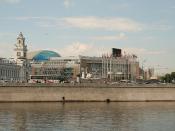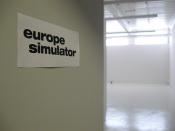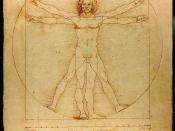By the beginning of the sixteenth century, before the deaths of Michelangelo or even Leonardo da Vinci, the renaissance movement in Italy had pretty much run itself out. In northern Europe, however (in Germany, the Netherlands, Spain, France, and England) humanism was just coming into its own. The northern humanists are sometimes called the Christian Humanists, as though the Italian humanists were not Christians, which, as I have said, I think in most cases they definitely were. One modern scholar, Gerald Walsh, defines the Christian Humanists as men who believed it was man's priviledge to seek happiness in this life. They further believed, according to Walsh, that true happiness was based on reason, but that man best attained the goal of happiness when he was aided by divine grace. This new force of the Renaissance in the 16th century, which came from northern Europe, focused less on painting and sculpture and more on a program of practical reform in a wide range of areas, including religion, education, and government.
Yet, as More's Utopia makes clear, the humanists' interests in practical reform were in tension with the humanists' positions as members of the political establishment. They were also courtiers. Nevertheless, let me turn briefly to the humanists ideas for reform as these were put forth by members of the Sir Thomas More circle. You might at some point wish to consider More's Utopia in this particular historical context.
First and foremost, perhaps, the members of the More circle vigorously supported the general humanist trend away from scholasticism and towards making rhetoric the basic subject of the educational curriculum; and for models of rhetoric they turned (as Petrarch had before them) to the classics, and especially to Cicero. But this return to the classics was not a turn away from Christianity; rather...


